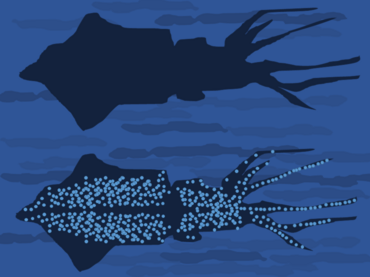Our website is made possible by displaying online advertisements to our visitors.
Please consider supporting us by disabling your ad blocker.
Counter-illumination

Counter-illumination is a method of active camouflage seen in marine animals such as firefly squid and midshipman fish, and in military prototypes, producing light to match their backgrounds in both brightness and wavelength.
Marine animals of the mesopelagic (mid-water) zone tend to appear dark against the bright water surface when seen from below. They can camouflage themselves, often from predators but also from their prey, by producing light with bioluminescent photophores on their downward-facing surfaces, reducing the contrast of their silhouettes against the background. The light may be produced by the animals themselves, or by symbiotic bacteria, often Aliivibrio fischeri.
Counter-illumination differs from countershading, which uses only pigments such as melanin to reduce the appearance of shadows. It is one of the dominant types of aquatic camouflage, along with transparency and silvering. All three methods make animals in open water resemble their environment.
Counter-illumination has not come into widespread military use, but during the Second World War it was trialled in ships in the Canadian diffused lighting camouflage project, and in aircraft in the American Yehudi lights project.
Previous Page Next Page


